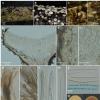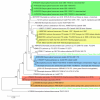
21-12-2025 09:32
Hello.A tiny ascomycete found embedded in wood in

21-12-2025 21:32
Pol DebaenstHello, Garden, Burgweg 19, Veurne, BelgiumOn 10/1

22-12-2025 23:38
Patrice TANCHAUDBonsoir, récolte sur un mur en pierre, apothéci

22-12-2025 00:47
Patrice TANCHAUDBonsoir, récolte à proximité du milieu dunaire

21-12-2025 21:40
Isabelle CharissouBonjour, j'aimerais connaitre les références de

20-12-2025 23:08
Patrice TANCHAUDBonsoir, récolte sur sol sablonneux dans l'arri�
 Hello,
Hello,I found two species of Brunnipila in Taiwan. The sequence and morphological characteristics of PD2303_23 are similar to Brunnipila fuscescens, but the ascospores are sometimes shorter. PD2303_23 failed to identify the substrate.
According to the morphology of the apothecium and hairs of NT2405_09, it was identified as Brunnipila sp., but no Brunnipila species with filiform ascospores was found.
Detailed information and photos are organized in PDF.
Thanks for your help.
CHEN,YI-SIOU


Placing NT2405_09 in the genus Erioscyphella seems to be a better choice. It also has the characteristics of long spores.



 Brunnipila-0001.pdf
Brunnipila-0001.pdf